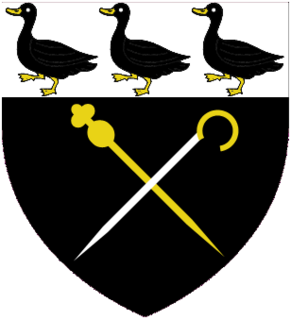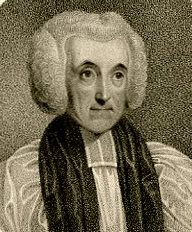Related Research Articles

Richard Neile was an English churchman, bishop successively of six English dioceses, more than any other man, including the Archdiocese of York from 1631 until his death. He was involved in the last burning at the stake for heresy in England, that of the Arian Edward Wightman in 1612.
John Scory was an English Dominican friar who later became a bishop in the Church of England.

William Talbot was an English Anglican bishop. He was Bishop of Oxford from 1699 to 1715, Bishop of Salisbury from 1715 to 1722 and Bishop of Durham from 1722 to 1730.
The Bishop of Lichfield is the ordinary of the Church of England Diocese of Lichfield in the Province of Canterbury. The diocese covers 4,516 km2 of the counties of Powys, Staffordshire, Shropshire, Warwickshire and West Midlands. The bishop's seat is located in the Cathedral Church of the Blessed Virgin Mary and Saint Chad in the city of Lichfield. The Bishop's residence is the Bishop's House, Lichfield, in the cathedral close. In the past, the title has had various forms. The current bishop is Michael Ipgrave, following the confirmation of his election on 10 June 2016.
Geoffrey de Muschamp was a medieval Bishop of Coventry.

John Blyth or John Blythe was a medieval Bishop of Salisbury.

Thomas Seward was an English Anglican clergyman, author and editor who was part of the Lichfield intellectual circle that included Samuel Johnson, Erasmus Darwin and his own daughter Anna Seward, amongst others.

John Bird was an English Carmelite friar and subsequently a bishop.
Anthony Draycot was an English Roman Catholic churchman and lawyer. During the reign of Queen Mary he held a diocesan position as chancellor; his role in condemning numerous Protestants to death is detailed in Foxe's Book of Martyrs.

Richard Love (1596–1661) was an English churchman and academic, Master of Corpus Christi College, Cambridge, Lady Margaret's Professor of Divinity, member of the Westminster Assembly, and Dean of Ely.

Spencer Madan (1729–1813) was an English churchman, successively of Bishop of Bristol and Bishop of Peterborough.
Richard le Scrope was an English cleric who served as Bishop of Coventry and Lichfield and Archbishop of York and was executed in 1405 for his participation in the Northern Rising against King Henry IV.
Geoffrey Blythe, LL.D., was an English divine.
Thomas Edwards (1729–1785) was an Anglican clergyman and divine.
Anthony Scattergood (1611–1687) was an English clergyman and scholar.
William George was an English churchman and academic, Provost of King's College, Cambridge from 1743 and Dean of Lincoln from 1748.

Sneyd Davies was an English poet, academic and churchman, archdeacon of Derby from 1755.
References
- ↑ . Dictionary of National Biography . London: Smith, Elder & Co. 1885–1900.
- ↑ Cox, John Charles (1903). Derbyshire. London: Methuen & Co. p. 51. Retrieved 14 March 2009.
- ↑ "Blythe, Geoffrey (BLT483G)". A Cambridge Alumni Database. University of Cambridge.
- ↑ Cooper, Charles Henry; Cooper, Thompson (1858). Athenae Cantabrigienses. Vol. I. 1500–1585. London: Bell & Daldy. pp. 40–41. ISBN 9780598016980 . Retrieved 14 March 2009.
- ↑ "Bishops' House". Museums Sheffield. Sheffield Galleries and Museums Trust. Archived from the original on 20 November 2005. Retrieved 14 March 2009.
Attribution
![]() This article incorporates text from a publication now in the public domain : "Blythe, Geoffrey (d.1530)". Dictionary of National Biography . London: Smith, Elder & Co. 1885–1900.
This article incorporates text from a publication now in the public domain : "Blythe, Geoffrey (d.1530)". Dictionary of National Biography . London: Smith, Elder & Co. 1885–1900.